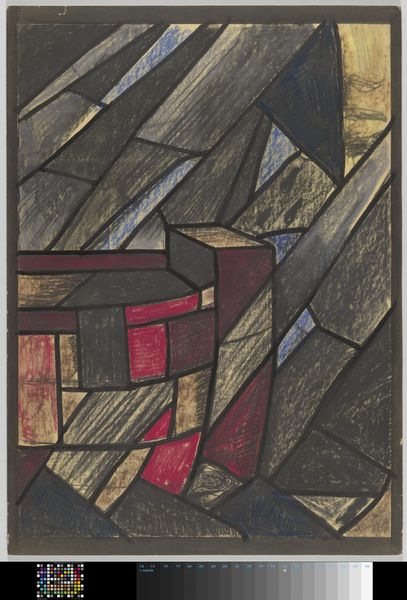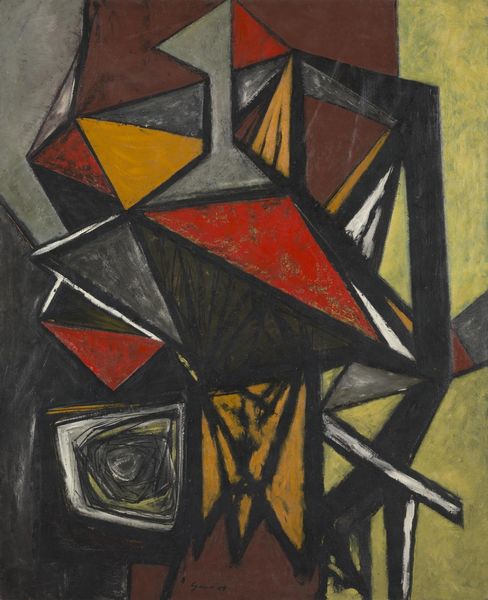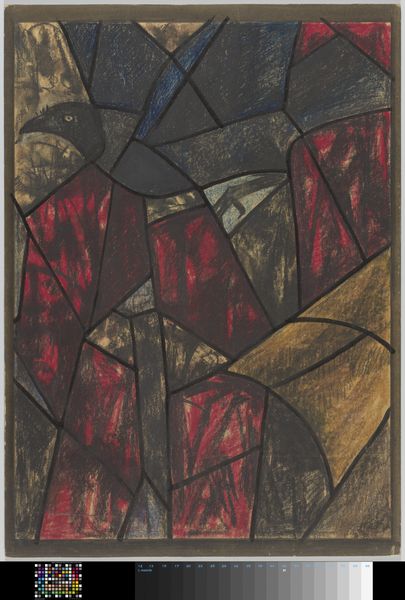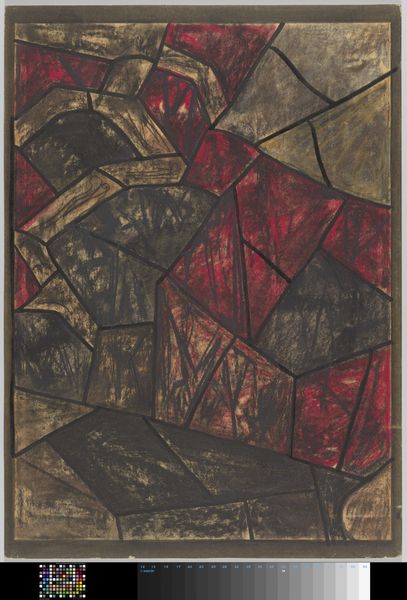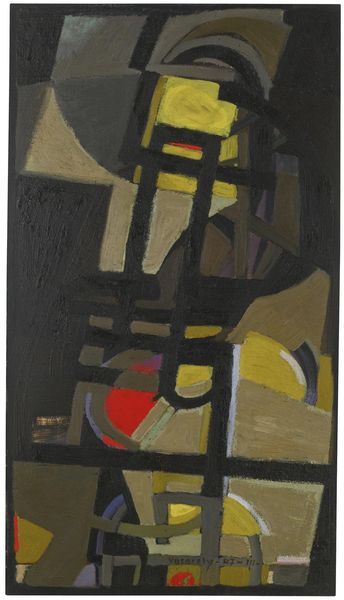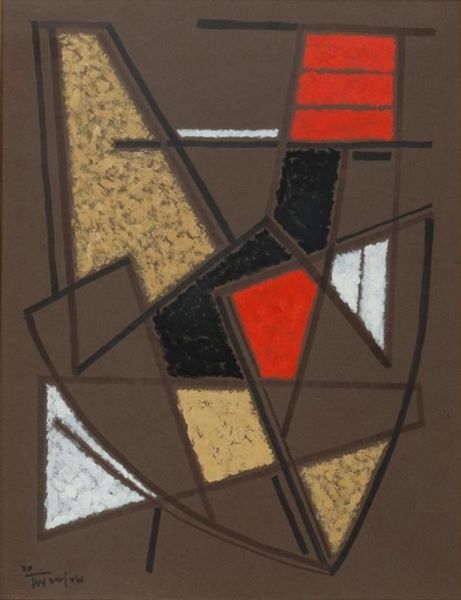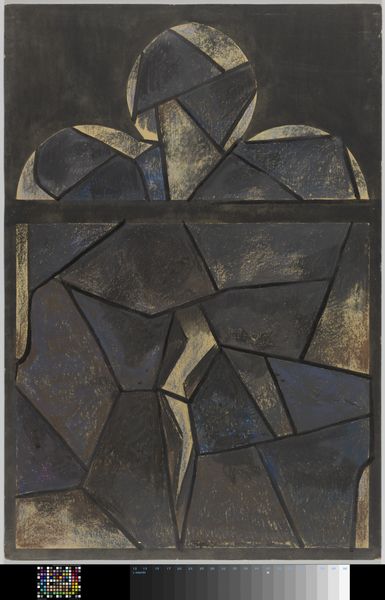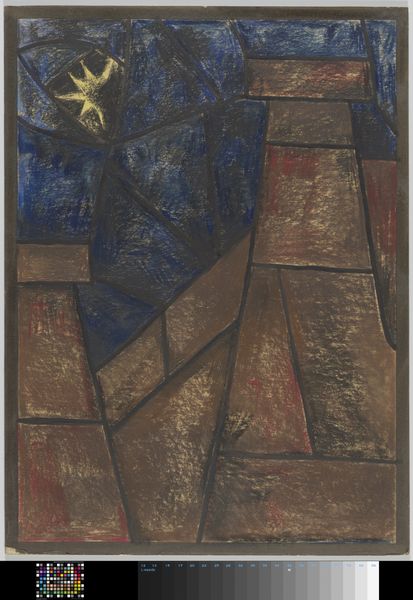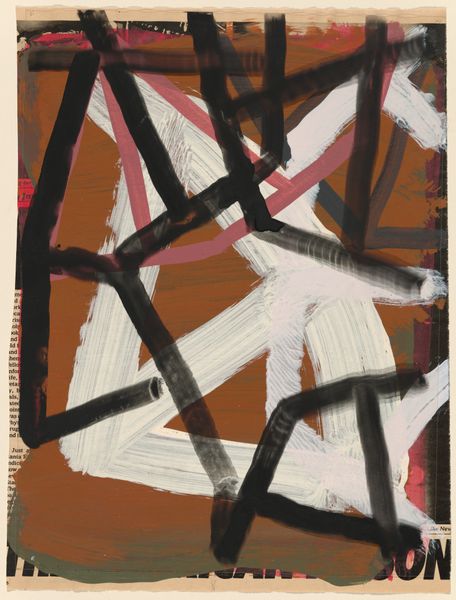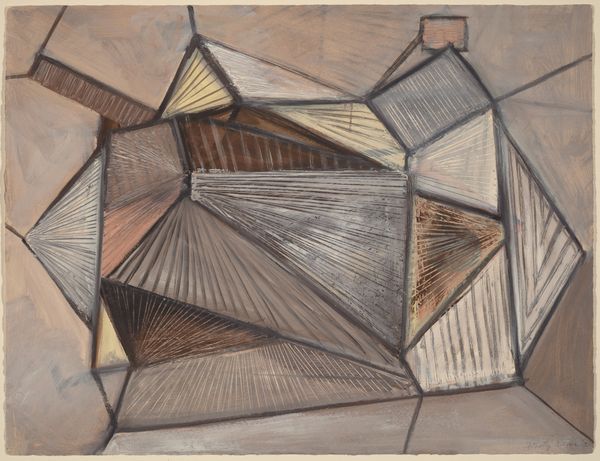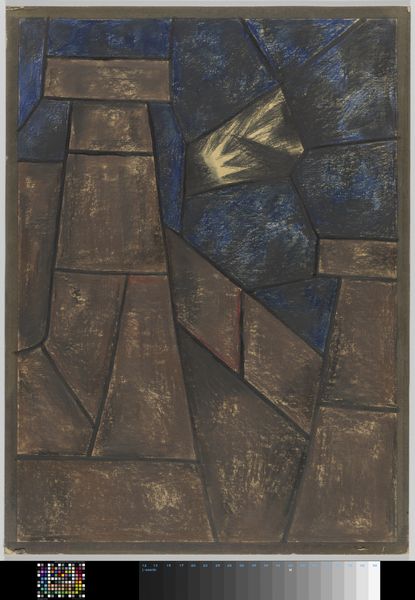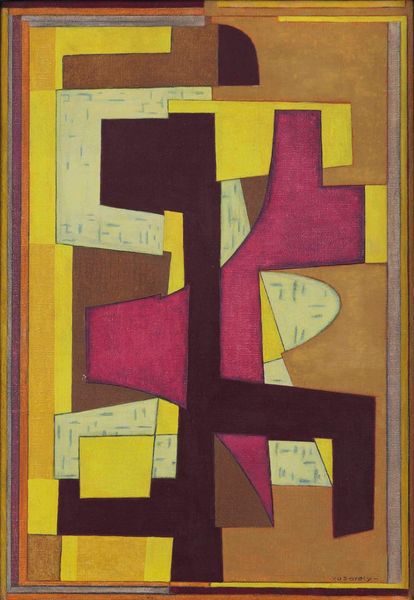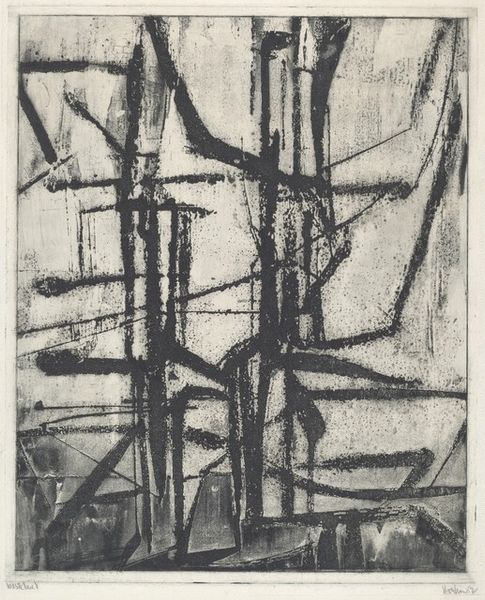
Dimensions: support: 1160 x 890 mm frame: 1323 x 1054 x 55 mm
Copyright: © The estate of William Gear | CC-BY-NC-ND 4.0 DEED, Photo: Tate
Curator: Here we have William Gear's "Composition." Editor: It feels like looking at a half-remembered machine, or maybe a dream of scaffolding. The colors are muted, like tarnished brass. Curator: Gear, a British artist born in 1915, explored abstraction through the lens of industrial and urban landscapes. Considering the socio-political context, his use of geometric forms and industrial palette reflects the post-war reconstruction era. Editor: I can see that. There's a sense of rebuilding, or maybe even a yearning for order. It's not cold, though, there’s still a tenderness to how the lines waver. Curator: The materials used, most likely oil on canvas, speak to the democratisation of art production after the war. Editor: I’m seeing it as the ghost of something. Something solid becoming air, or the other way around. Either way, it’s moving me. Curator: It's an intriguing confluence of material and memory. Editor: A fitting end to our visit, don't you think?
Comments
Join the conversation
Join millions of artists and users on Artera today and experience the ultimate creative platform.
tate 8 months ago
⋮
The Scottish artist William Gear was in Paris after the war and was briefly associated with the International expressionist Cobra group. This work demonstrates how he moved away from Cobra towards the kind of controlled abstraction being practiced by a number of the younger French painters in which a prominent grid structure is combined with references to landscape. In this painting the artist disposes areas of natural colour to suggest a crystalline structure in nature. Gallery label, August 2004
